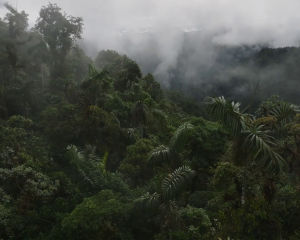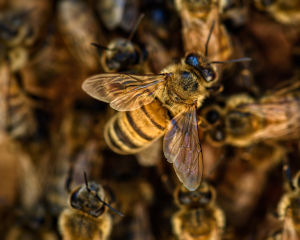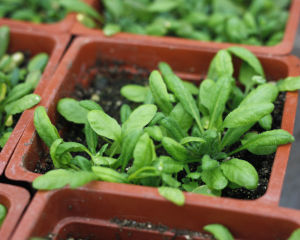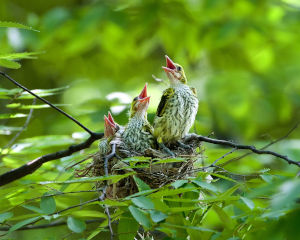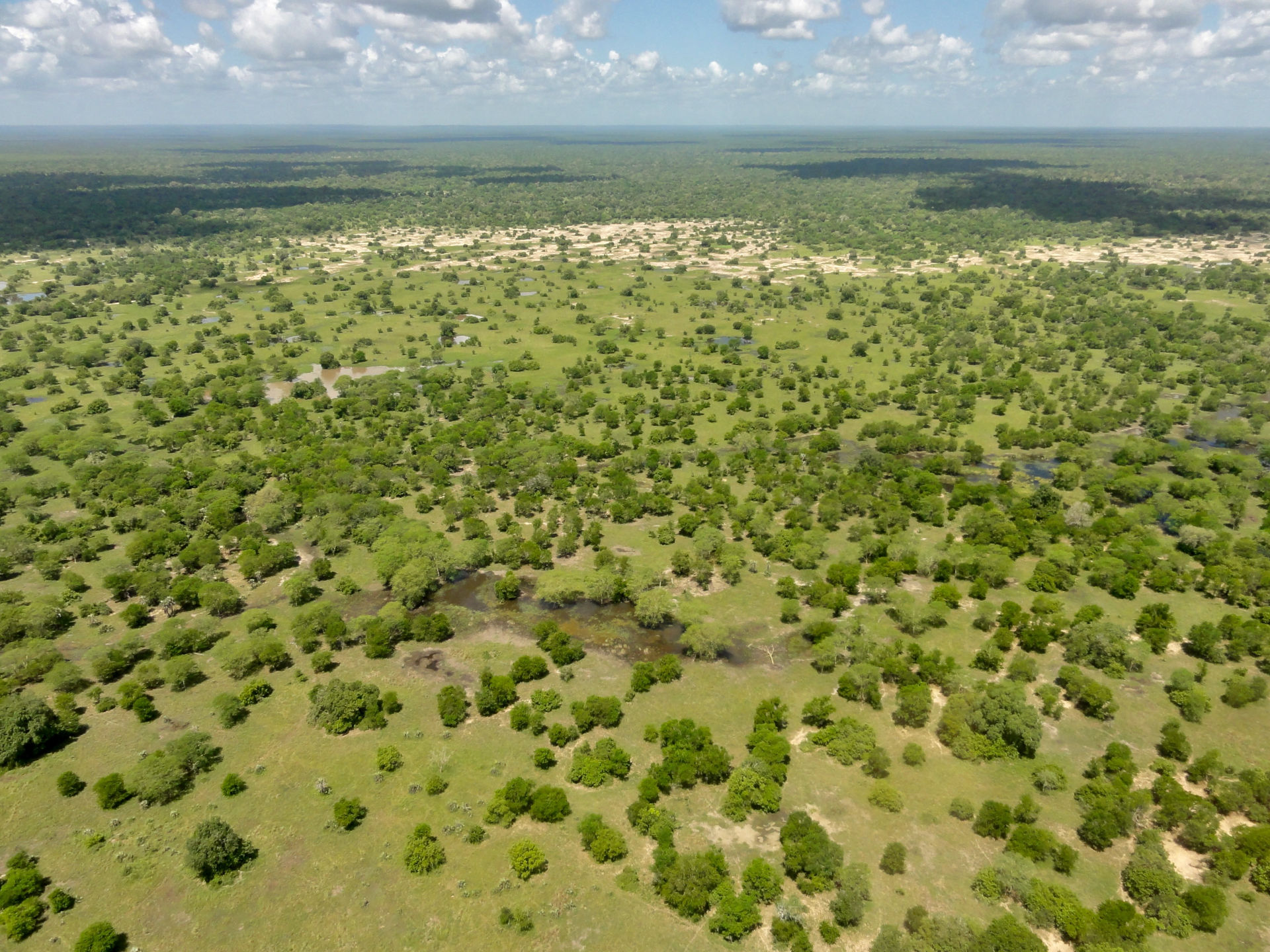
A civil war destroyed the animal population.
Plants were significantly overgrown.
How Gorongosa became one of the most successful restoration projects on the planet.
Rift Valley Savannah. Marc Stalmans
Gorongosa National Park’s Astonishing Comeback
An Interview with Dr. Marc Stalmans
By Gayil Nalls
Sign up for our monthly newsletter!
Dr. Marc Stalmans is the Director of Science at Gorongosa National Park in Mozambique. Born in the DRC, Congo, Kinshasa to Belgian parents, the family returned to Belgium when he was 15. After graduating as a forestry engineer, he emigrated to South Africa where he gained his Master’ of Botany degree while working as a research officer in a nature reserve. He later completed a PhD in the Department of Animal, Plants, and Environmental Sciences at the University of Witwatersrand in Johannesburg.
Over the last seventeen years, Dr. Stalmans has been working closely with the Gorongosa National Park to help ensure the recovery of its wildlife and infrastructure. The park had been devastated during the country’s civil war (1977-1992) when soldiers lived there and killed most of the animals. In 2004, Greg Carr and the Carr Foundation formed the non-profit organization Gorongosa Restoration Project in a public-private partnership with the Mozambican government to rehabilitate, expand, and co-manage the park. It was two years later that Dr. Stalmans began consulting with them on a continuous basis until he joined full time in 2012 as the Director of Science. These years of critical and spectacular restoration in one of the largest parks in Africa have worked, and the species have rebounded into a coherent ecological matrix. This reestablishment of the natural balance between plant biodiversity and wildlife has recreated a sustainable symbiosis of evolutionary mutualistic relationships.
In 2010, the park was expanded to include Mount Gorongosa and its rainforest, an important development for the entire ecosystem. The reintroduction of animal species has not only helped restore interactions between plants and animals but also the insects and microorganisms that maintain the health of the park’s ecosystem, a process witnessed by Dr. Edward O. Wilson who visited the park in 2011 to research his book Life on Earth. The Edward O. Wilson Laboratory, part of the Gorongosa’s Science Center, was created in 2014. Dr. Stalmans and his team helped coordinate the scientific research of the park’s expansive biodiversity and ecology, while also training a new generation of Mozambican scientists and researchers. Today, Gorongosa’s restoration continues, but its success in reestablishing biodiversity is already an example to the world.
This month we spoke Dr. Marc Stalmans on the different facets of this conservation project and what made it so successful. This ranging conversation has been edited and arranged to highlight the key topics that we touched upon.
On plants and restoring the complex web of life during his time at Gorongosa.
On the plant side, it was obvious when we first started that the general habitat was in very good shape. It was just the animals that were missing. Gorongosa is located in the extreme southern part of the Great African Rift, and on those alluvial soils with good rainfall, and supplemented by frequent flooding, you get a tremendous productivity in terms of vegetation. Historically, that had supported a huge density of animals. However, those animals got depleted by 90% to 99%, depending on the species, during the war. For example, there were around 14,000 buffalo in that system before the war, but after the war there were less than 100 left. The wildebeest were around 6,000 before the war, and that was reduced to less than 15, a number we can be quite sure about.
There was just that lack of animals to graze the grass and to browse the trees and the shrubs, so the vegetation was even more overwhelming in its lushness in those days. Just after the early years, I’d go out in the month of March or April, after the end of summer and the main rains, and you couldn’t see over the high grass layer. Over the years, that has come down. So, if you’re talking only from a plant perspective, I would say it’s perhaps less high and dense than what it was. That said, grazing is very beneficial for the system because that is what the plants are used to. It’s good for the grass layer to be grazed. That’s what you would expect. That’s how those systems have evolved. In the historical part of the park, there wasn’t much of an issue with plants, and that has continued. There were obviously external pressures. Some places, we were at risk of slash and burn agriculture; we had illegal logging, and we had people encroaching on the park to make fields. That has reduced over time. We have still got some of that, but that impact has been much reduced. So, from that perspective, it’s been a positive.
In 2015, an article was published by a PhD student from Princeton University about Gorongosa’s restoration. Part of his fieldwork included comparing aerial imagery of the park before and after the war. For the image of Gorongosa before the war, he sourced a 5.5-m-resolution black and white satellite photograph that was originally captured in 1977 by the US intelligence service Hexagon satellite program (KH9), which was declassified in 2011. In comparison to what we can buy commercially nowadays the quality of the image was not as good, but it was still a very high-resolution image and that could be used to effectively demonstrate change in the park. This was important because during this time, there was a lot of speculation about the park’s state of recovery. Some people believed that Gorongosa was experiencing big fires because there were no animals to graze down the grass. While others suggested that because of this lack of animals, the woody cover was increasing. Both stories couldn’t have been true, it had to be either one or the other. So, by using this image and comparing it to more modern imagery, this young researcher was able to show that the woody cover had substantially increased. The best explanation for this wealth of trees and shrubs was that the decimation of the wildlife removed the top-down control on woody plants by the browsing animals. This overrides the impact of fire.
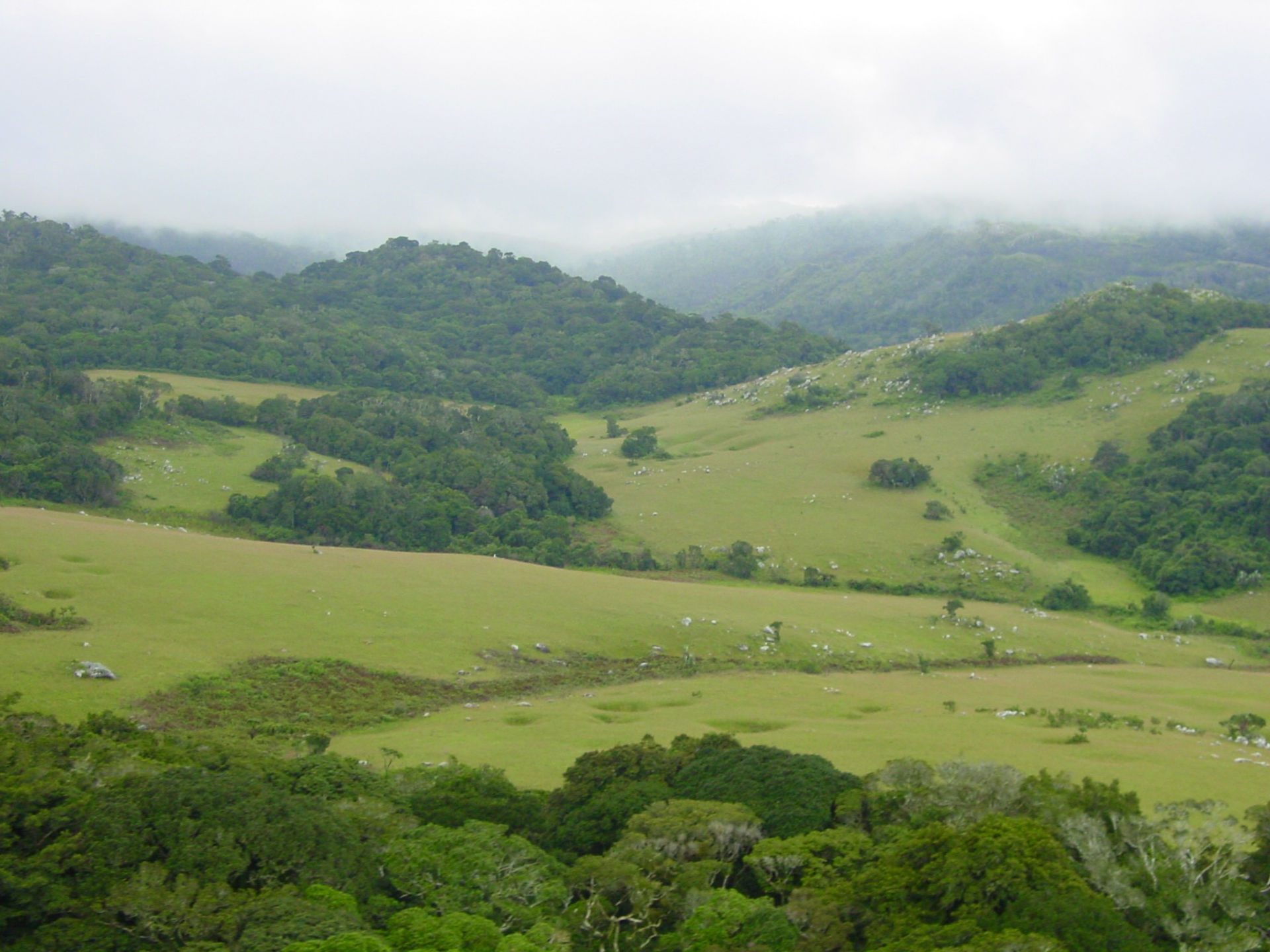
The role of fire in the African landscape
Fire has historically impacted the park but contrary to popular belief, didn’t negatively impact the trees and shrubs. The Savannah system is very well adapted to fire, and although the immediate visual effects on the landscape may not be appealing, it is part of a larger process that is fundamental to the regeneration of the landscape. In the long run the fire will allow these plants to maintain their vigor and diversity. However, in the rainforest, on the other side of Gorongosa Mountain, fire is extremely detrimental, and this is why slash and burn agriculture can be so damaging to the ecosystem there. In the Savannah system, you want fire at a certain interval, and then in other systems, like the rainforest, you don’t want any fire. You need a very nuanced kind of story about fire.
Fire can also impact the movement of the animals in the park. Where there is fire, the animals may temporarily shift locations because there won’t be grass, or if the fire is not very hot, they might move towards it. I’ve seen animals in landscapes still smoldering, eating ash beds because they are so rich in minerals. There’s also always some grass or shrubs that have been barely touched by the fire. It is dependent on the fire’s intensity; either everything has been removed because it was too hot for anything to survive, or it can be very patchy, and can still supply subsistence.
Depending on when the fire comes, such as after the first rain when the temperatures are high and the soil is very fertile, your grass growth can be quite explosive. Those first green shoots, although there might not be many, they’re very nutritious and so attracts animals. So, you will have patches with very little grass just starting to flush with a big, tall grass right next door, but all the animals will be on the short grass because of its quality.
Generally, it’s kind of a losing battle. The animals can’t keep up with the grass. It grows too fast. That’s different in an agriculture context. If you have your animals in a paddock and you’ve got too many animals for the grass, the animals will benefit from the new grass growth, but the grass will deplete its reserves, and it’ll have to keep on doing that, and that can be detrimental. In our natural system, the late season fires are quite big, and animals just can’t keep up with the regrowth following the first rains. After a while, the grass gets on top of the animals.
It’s only if you’ve got very small patches or very nutrient-rich patches where animals will be able to keep the grass down, and then it becomes what we call a grazing lawn, where it literally looks like a lawn in a garden. Couch grass is a typical grass species in such a grazing lawn. Those are kind of mat forming, spreading grasses. They love that kind of environment because they can outcompete grasses that grow taller, which can’t take that grazing pressure. There’s a place for everybody in those systems.
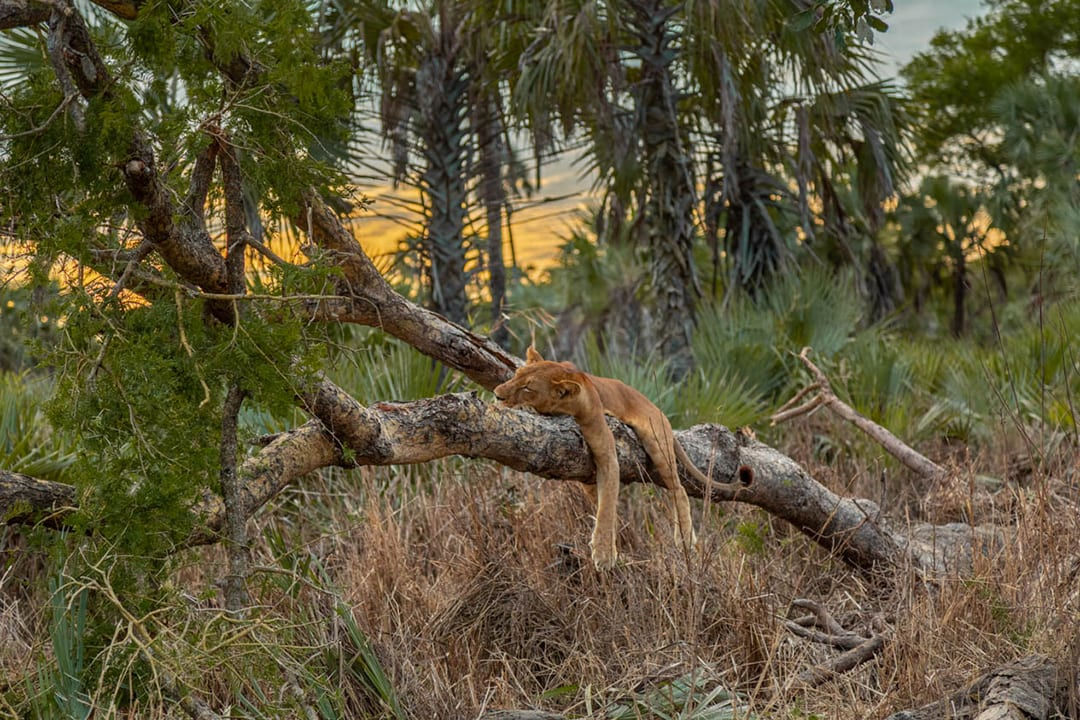
On species recovery and animal competition for plant resources within Gorongosa.
Princeton University has got a strong research project program, and they’re looking at the diet preferences, local plant biodiversity, optimal environmental conditions, and so on, and providing the park with data to help maintain wildlife recovery. We know from historical records, which animal species were present. If I look at the early research work done, those plant species are all still present. So I don’t think that has changed much. Perhaps some of the proportions have changed, but the species itself, from the plant side, they’re definitely all still present. We have all the animals back except the white and the black rhino, as well as roan antelope and tsessebe. These we will need to reintroduce. Otherwise, we have the full complement back except that the proportions of animals are quite different from historical terms. Now, there is a dominance of waterbuck. Probably the biggest waterbuck population in Africa with around 60,000 individuals as counted in November last year, so they’re much more numerous now than they were historically. Whilst, for example, species like zebra and wildebeest are still a lot less numerous than they were previously. So those are the imbalances. I think proportionally, although everything got depleted during the civil war because of illegal hunting, some species like waterbuck survived in slightly higher numbers. Then when the illegal hunting pressure diminished, they were able to just rebound a lot faster. If you take, for example buffalo, they were reduced very substantially and they’re big animals, so they take a longer time to mature. Although we introduced 200 buffalo, they have a protracted gestation period and have a longer interval between calves, so they took a lot longer to rebound. They are doing very well. We have already got over 1,000, but they can only grow at say 12% to 15%, maximum intrinsic growth rate, whilst the waterbuck has probably been doing around 30% annually. So right now, the doubling time of a waterbuck is less than three years. If you’ve got an animal with a slower growth rate, the doubling time will be substantially longer. And although both animals are actually doing extremely well, it’s just an intrinsic growth rate that’s biologically constrained. So what you get is that the one species is really outgrowing the other one.
Over time, it’ll probably balance as we believe buffalo are much better competitors than waterbuck. So once the buffalo numbers are substantial, they’re going to start out-competing the waterbuck and I would expect in a few years’ time, the waterbuck to be on a downward curve whilst the buffalo is still on the upward curve. But that’s where research and the monitoring are essential. Whether that’s true or whether we get a kind of new equilibrium that’s being permanently fixed, we don’t know that yet. Intrinsically, waterbuck are quite demanding in terms of the quality of the diet that they require, eating mostly grasses and requiring easy access to water. Buffalo will eat grasses, herbs, weeds, and sedges, while in leaner times they will eat, bark, leaves, and more. They are flexible and can survive on a slightly lower quality diet. The buffalo are also less prone to predation because they’re such big animals. Our predator numbers are really increasing very well and that, partnered with the competition for plant resources, will probably means the buffalo will come out on top and the waterbuck will not.
On why animal conservation is good for plant conservation.
There was very little pressure on the Gorgongosa plant world for many years. Previously, people saw the park principally as a food resource, as a larder. As I mentioned, there was some encroachment, some people doing slash and burn agriculture, but that was mostly on the periphery, a little bit of illegal logging. During the war, people were displaced and so this people pressure on the plant resources dissipated. Now, because of the recovery of the animals there is an increased ranger presence throughout the park, which means that despite the increasing human population, we are better protected from further encroachment and illegal logging. When you look at the landscapes just outside the boundaries of the park, you can very clearly see the poorer condition of the environment because of the expansion of agricultural and human activities. This contrast makes it clear that the park is actually very good for the vegetation. The plant resources are being protected by virtue of protecting the animals, these two go together.
On the park’s sustainable agriculture and contributions to the local community.
Part of our conservation strategy involves human development. One thing we do is shade-grow coffee within the forest of Gorongosa mountain because of the conditions there. Generally speaking, around the park, we try to promote conservation agriculture. We try to expand agroforestry, to have more permanent tree crops like cashews. It’s a host of different measures trying to improve productivity, so that people have more, but also to do it in a way that is more kind to the environment and that’s more sustainable, that gives greater resilience. For example, we have a honey project that on the one hand, generates income for locals. But on the other, there is an increased incentive for conservation because the trees from which the bees are foraging must be protected. So, it’s beneficial for remaining forest patches and woodlands to have an intensive beekeeping program because people will be more favorably inclined towards protecting these areas because they know it’s the food source for the bees.
More on bees, honey, and the cylinder beehive.
In the Rift Valley, there’s quite a big diversity of trees. Honey production is especially prevalent in what we call the Miombo, an extensive dry forest which is on the Western and the Eastern flanks of the Rift Valley. As you start moving out of the Rift, the terrain becomes hillier. The geological substrate also gives rise to more sandy soils, so less nutrient-rich, and you get vegetation that’s called Miombo, which covers a large part of Southern Africa. It’s generally a very dense woodland, dominated by leguminous species, especially in the genera Brachystegia and Julbernardia. Historically, Miombo is very well known for its abundant honest production and it was tradition that people made beehives by removing a full bark cylinder from the tree. Not very productive because when you remove a full cylinder of bark, the tree is going to die. So, part of the honey project is also providing improved beehives, which are made from offcuts from the logging industry, sparing the natural trees. You no longer use those bark cylinders, and as a result you get a better production because the more modern beehives yield a bigger return on an annual basis. You always need to have all those pieces coming together. It’s not a single intervention, it’s more an integrated approach at a problem that saves trees and moves the bee keeping to a more sustainable and profitable production.
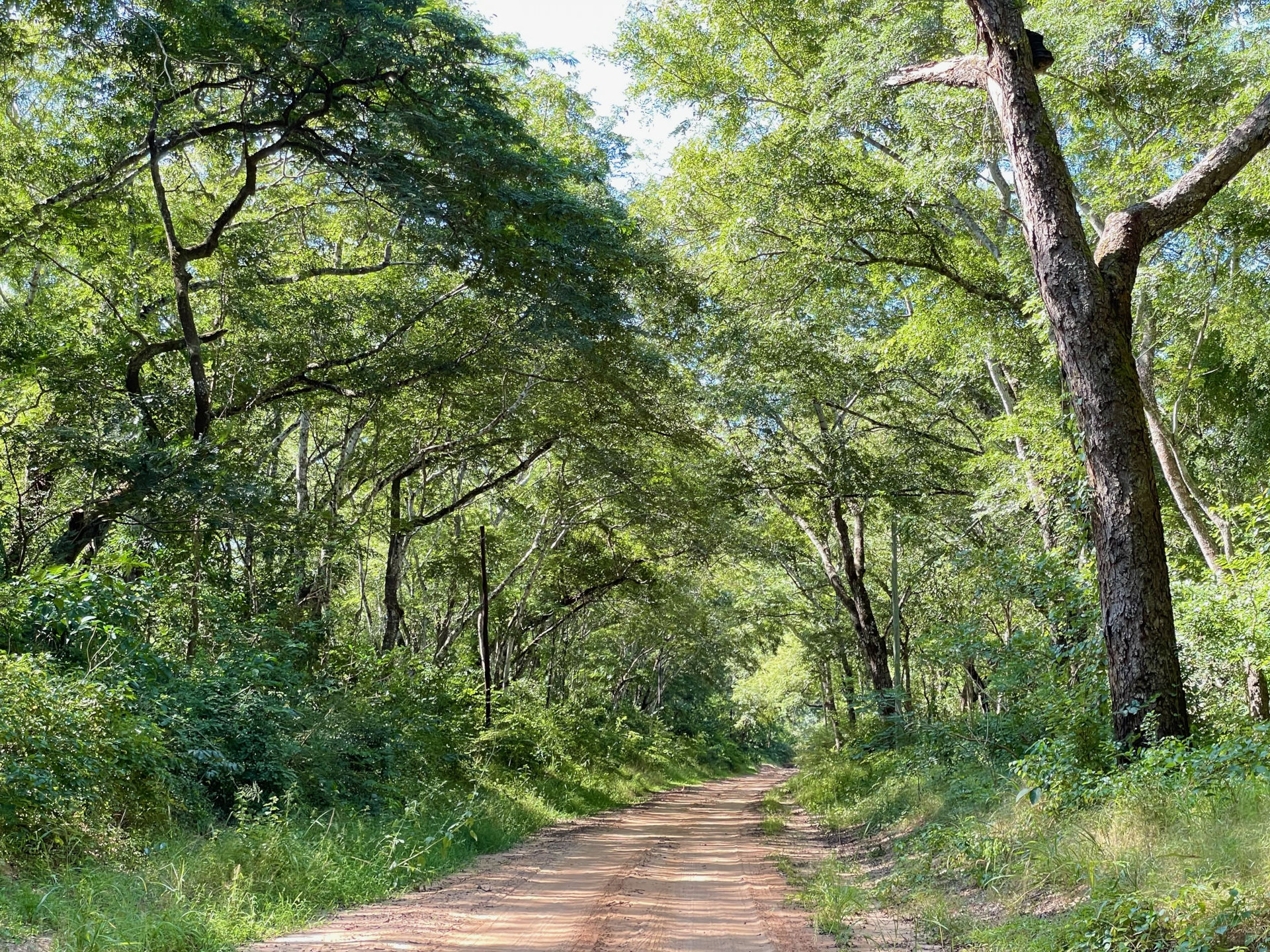
On the tree he most admires in Gorongosa
Sterculia appendiculata is a deciduous tree that is also called Tall Sterculia. It’s a very, very tall tree with this smooth, whitish bark. It’s very striking. It sheds its leaves in the dry season and its flowers reappear across its rounded crown around the start of the rainy season before the leaves and fruit. It grows around the edges of dry woodlands, often on or around termite mounds. Termites locate their mounds outside of any flooding influence, generally in open savannah. Theses mounds improve the texture of the soil, improve water flow, and make it a nutrient-rich area with much denser, little bush clump, or a thicket. Many times, these areas support little forests of various trees, creating a very different composition that wouldn’t be present in the matrix of the open savannah otherwise. Animals always prefer to graze or browse on those termite mounds because it offers a better nutrient return for them. The animals and plants, including pangolins, who eat termites and trees like the Sterculia Africana, are making use of these nutrient-rich patches that are so important of the African savanna ecosystem.
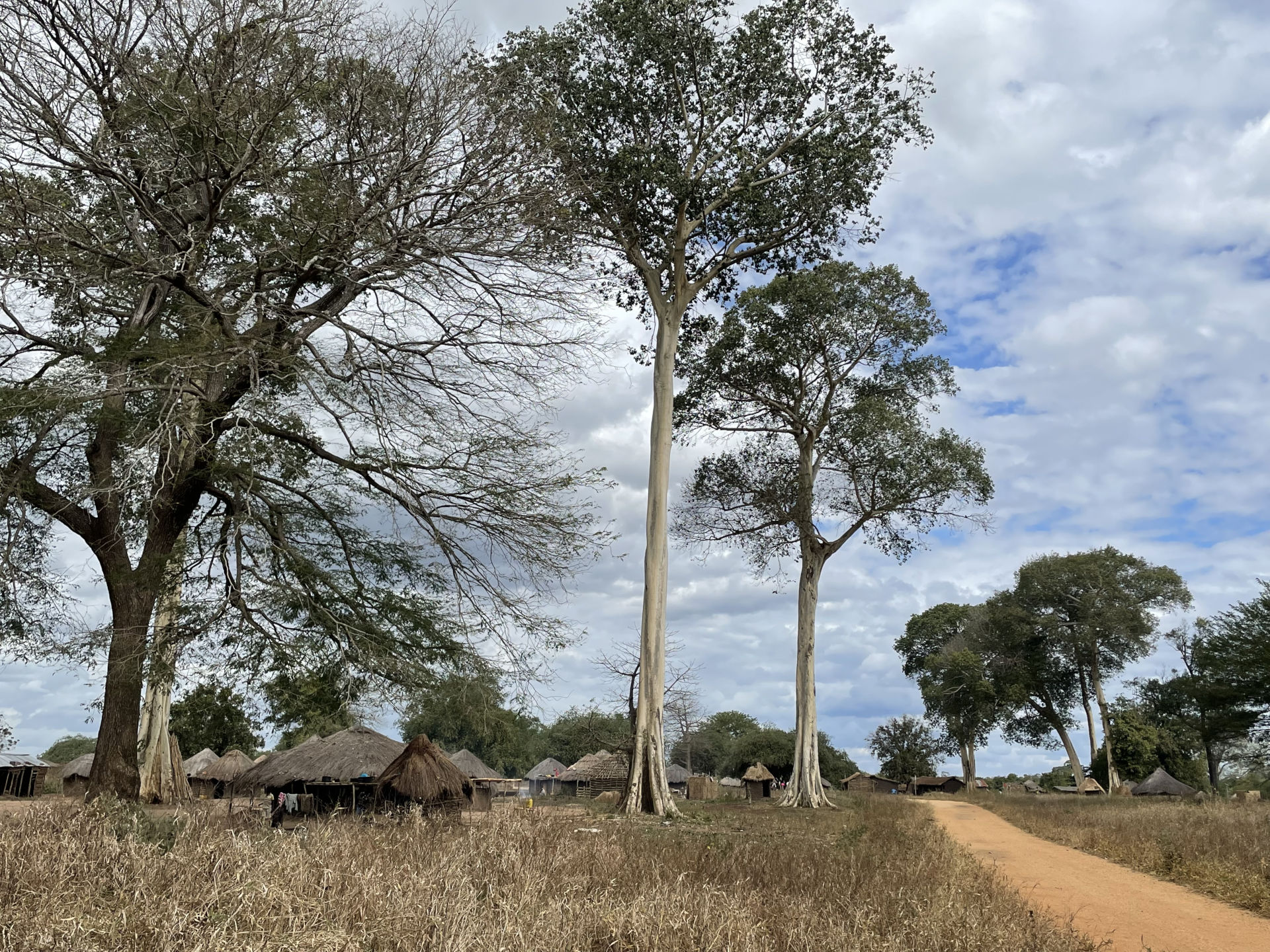
The particular smells of Gorongosa and Mozambique
At times of the year, you get particular smells. The one I like is the so-called potato bush Phyllanthus reticulatus. If you walk past that potato bush, especially towards the evening, you will get the smell which reminds you of a cooked potato or a mashed potato. Suddenly, you get this kind of whiffle. It’s interesting. It’s not a dominant smell in the landscape, it’s just when you walk past, suddenly, it hits you. It’s very close to the actual thing.
Problems with invasive species
We have a variety of invasive species, especially in the wetland areas. We’ve got the water hyacinth, which comes from Central America, but in much of Africa it’s been present for many decades, so it’s become part of the system.
We’ve got the invasive from Central America, Mimosa pigra. It’s been in the system since at least the 1960s. In other parts of Africa, it may have been brought in even earlier. It is a huge problem in a place like Kakadu National Park in Australia and I’ve seen it in other African parks too. Gorongosa was on the way of having a big problem with it. However, with the recovery of wildlife, they really like it and they’ve been keeping it kind of under control. It’s decreasing under the animal pressure, so it’s a mixed story about the invasive species. It’s something that we are always looking out for. We’ve got some pockets of things that are problematic, but generally it’s not too bad.
Native edible plants beloved by the people of Mozambique
One that’s very slightly less common where we are in the Central part of Mozambique, but especially present in the Southern part of Mozambique, South Africa, and Botswana, is the African marula tree (Sclerocarya birrea). The tree is also called the elephant tree or the marriage tree locally, and it’s an extremely popular as a food source. One of the most popular uses is to make a traditional beer from it. Amarula liquor is made from the Marula fruit mixed with cream and sugar. It’s such a popular liquor nowadays that you can find it globally.
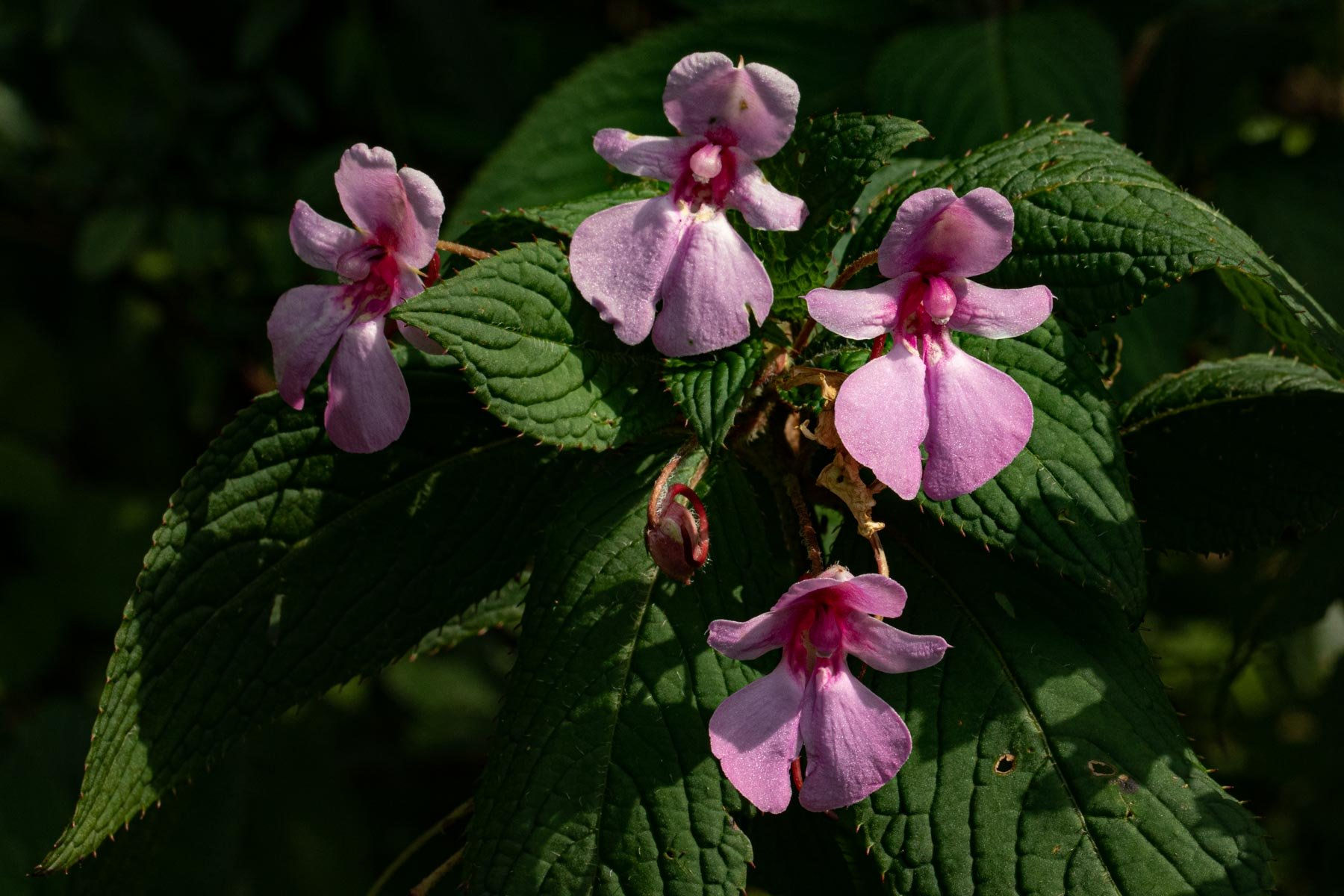
The new plant, Impatiens Wuerstenii, discovered by Bart Würsten. Marc Stalmans
On new plants found in Gorongosa
In this time of mass biodiversity loss, new plants are still being found. Since we started with the restoration project, the biological exploration of Mount Gorongosa, revealed a beautiful endemic plant species called Impatiens wuerstenii. This flowering perennial forb was found in rocky shaded areas, in the margins between the forests and the grasslands by the botanist and the plant’s namesake Bart Würsten.
There’s also a limestone substrate endemic flowering evergreen tree species that was found on the Eastern side of the park called Cola cheringoma (Sterculiaceae). It’s a big tree with a very narrow distribution and was only very recently discovered.
These recent findings are why Gorongosa is an endlessly fascinating place. It has a very-rich diversity, in part because of the heat of the rainfall, and is one of those very dynamic places that changes quickly. This is why, with a little assistance, Gorongosa was able to make such an extraordinary comeback.
Marc Stalmans, MSc, PhD, Director of Science for the Gorongosa National Park, is an ecologist with over 30 years of conservation research, planning, management, and development experience in Protected Area ecology.
Eurycorypha stalmans, a type of bush cricket, was named in honor of Dr. Marc Stalmans for his numerous and significant contributions to research and conservation in Gorongosa National Park.
Gayil Nalls, PhD, an interdisciplinary art and theorist, is the creator of World Sensorium and founder of the World Sensorium/Conservancy.

As Ireland transitions from the rich, smoky scent of peat-burning to a more sustainable future, its olfactory heritage is evolving. What will become the next iconic aromatic symbol of Ireland?
Click to watch the documentary trailer.
Plantings

Eat More Plants Recipes:
Toasted Almond Cream Cake
Edgewater Restaurant


